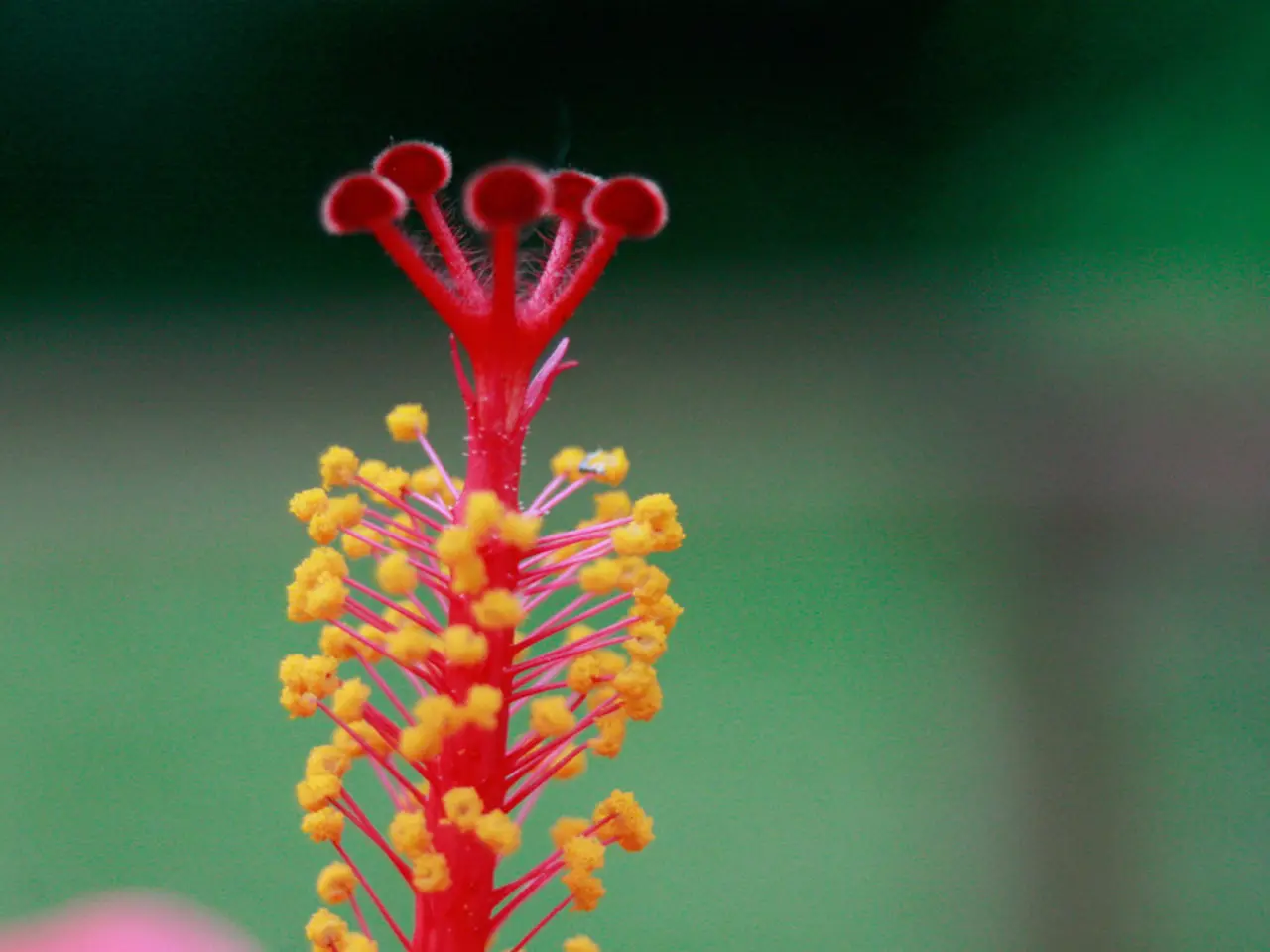United Kingdom designates Liverpool as the 2025 Hay Fever Hotspot, with pollen counts hitting record highs
In the heart of spring, a season marked by blooming flowers and lush greenery, residents in certain UK cities are bracing themselves for an onslaught of tree pollen — and none more so than those living in Liverpool.
According to recent data, Liverpool has emerged as the UK's hay fever capital for 2025, with a staggering tree pollen count of 302.50 PPM. This figure is significantly higher than other cities in the country, making it a particularly challenging season for allergy sufferers.
London, with a score of 63.38 and a high tree pollen count of 249.60 PPM, follows closely behind. Other cities in the top ten include Bolton, Blackburn, Reading, Leeds, and Wakefield, all of which have high pollen counts.
The higher pollen levels in northern cities compared to their southern counterparts can be attributed to a combination of factors. Firstly, there are greater tree pollen concentrations in cities like Liverpool and Birmingham, where measurements show significantly higher counts compared to other locations.
Secondly, the temperature patterns and relative humidity in northern cities may favour more intense pollen emissions at peak times. Although the southern UK generally has milder winters, northern cities may experience conditions that encourage pollen release.
Weather and pollen dispersal patterns also play a crucial role. Pollen counts tend to be higher during sunny, warm days and lower during rainy days, which wash pollen away. Northern cities may have climatic conditions (e.g., less frequent rainfall during critical pollen seasons or specific humidity/sunshine patterns) that enhance pollen release and airborne persistence.
Urban microclimate effects also contribute to the high pollen levels. Cities can retain warmth longer into the night compared to rural areas, delaying pollen settling and keeping levels high later into the evening. This effect might be more pronounced in northern urban areas.
The vegetation types and local flora in northern cities also contribute to the elevated pollen levels. Northern urban greenspaces and tree species compositions may favour tree or grass species that produce more allergenic pollen.
Coastal areas and careful planning around peak pollen seasons offer further relief for hay fever sufferers. However, during the peak tree pollen season, which spans from late March to mid-May, residents in high-risk areas like Liverpool and Birmingham are advised to prepare early.
AEG advises residents to take precautions such as keeping windows closed and using air purifiers with HEPA filters to reduce indoor pollen levels. Additionally, staying indoors during high pollen counts, wearing sunglasses, and using antihistamines can help alleviate symptoms.
While grass pollen dominates from mid-May to July, weed pollen lingers from June to September. Liverpool, for instance, has high grass pollen (48.90 PPM) and weed pollen (9.70 PPM) counts. Bradford, too, matches Liverpool's weed pollen levels.
With 13 million UK residents affected by hay fever, these strategies can help mitigate the impact of the season. Birmingham, with high grass pollen (45.00 PPM) and tree pollen (271.10 PPM) counts, is the second-worst affected city, with a score of 74.34. On the other end of the spectrum, Basildon is the least affected city, with a score of 21.74.
As the UK enters another pollen season, it's crucial for allergy sufferers to be aware of the risks and take steps to protect themselves. By understanding the factors contributing to high pollen levels, we can better prepare and manage our symptoms, ensuring a more comfortable spring season.
[1] Environmental Protection UK (2021). "Air Quality in the United Kingdom: A Comprehensive Guide". [Online] Available: https://www.environmental-protection.org.uk/air-quality-united-kingdom-comprehensive-guide/ [2] Met Office (2020). "Understanding UK Climate: The Impact on Allergies". [Online] Available: https://www.metoffice.gov.uk/weather/uk/climatechange/impacts/allergies [3] Allergy UK (2019). "Tree Pollen Allergy: Symptoms, Causes, and Treatment". [Online] Available: https://www.allergyuk.org/allergy/tree-pollen-allergy [5] British Lung Foundation (2020). "Pollen and Your Lungs: A Guide". [Online] Available: https://www.blf.org.uk/support-for-you/living-with-lung-conditions/air-pollution/pollen-and-your-lungs
- To combat the escalating tree pollen levels, residents in Liverpool, identified as the UK's hay fever capital for 2025, might consider investing in air purifiers with HEPA filters, keeping windows closed during high pollen counts, and using antihistamines as advised by AEG.
- Ascertaining that Liverpool and Bradford have high weed pollen counts, allergy sufferers in these cities may want to take extra precautions during the months when weed pollen predominates, from June to September.
- In the context of the UK's climate and its influence on allergies, it's important to recognize the role of factors such as temperature patterns, relative humidity, vegetation types, and urban microclimate effects in determining high pollen levels, as suggested by sources like the Met Office and the British Lung Foundation.
- As individuals increasingly focus on health-and-wellness, mental-health, skin-care, nutrition, fitness-and-exercise, and environmental-science, understanding the impact of climate change on pollen dispersion and its effects on the health of millions of UK residents becomes a pressing matter. For that reason, it's essential to stay informed about the risks associated with seasonal pollen, as evidenced by Environmental Protection UK, Allergy UK, and other authorities.




